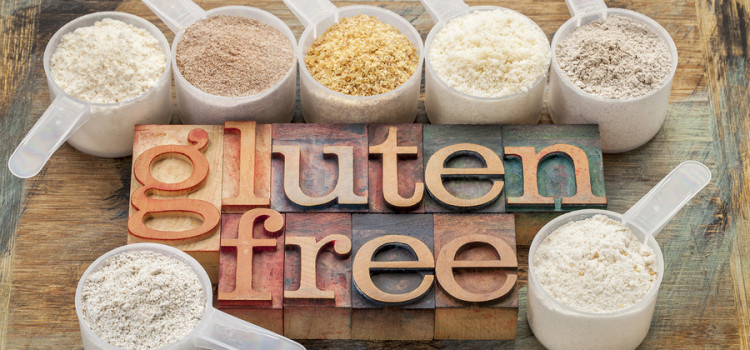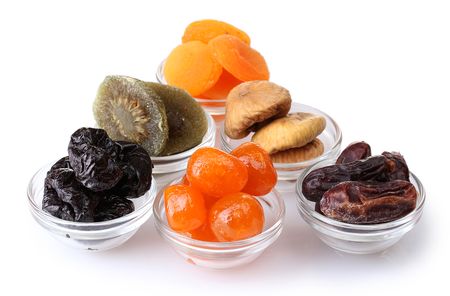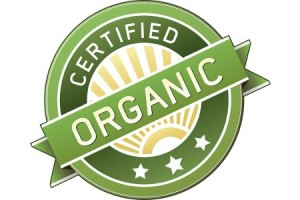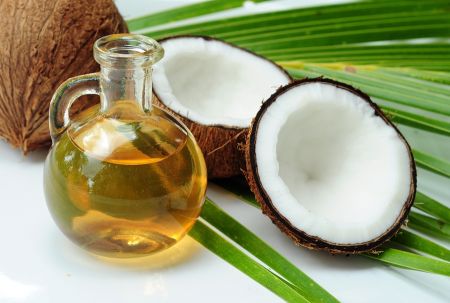If going gluten-free is becoming expensive for you—perhaps it’s time to consider trying a little do-it-yourself gluten-free baking.
Want to know how to make your own gluten-free foods? Your gluten-free education begins right now!
Here are 24 types of flour that you can use at home as part of your gluten free diet.

Gluten-Free Flours: How to Choose Them, How to Use Them
If living a healthy gluten-free lifestyle were as easy as shopping in a health food store for ready-made products, life would be expensive but relatively easy. These days, there are thousands of gluten-free foods sold and served around the world. If you aren’t concerned about cross-contamination, there are even more. If you ever plan on cooking and baking again, though, you might have a few things to learn about selecting and working with alternatives to naturally gluten-rich foods.
Gluten-free has acquired a reputation for being somewhat of a nuisance. It’s true that food-related activities aren’t always as simple as they might be with wheat flour, but a lot of the headache is due to lack of information. If you were to know from the start, for example, that millet flour shouldn’t be used by itself in baking, then you’d save yourself several hours of failed experimentation. That’s why it’s important to get to know your gluten-free alternatives and how to use them before you start going nuts in the kitchen.
Gluten has two major advantages in food preparation. First, it is what makes dough—for lack of a better term—“doughy.” When you see a mixed dough start to become adhesive and stretchy and strong, you’re watching gluten form bonds. Second, gluten is also a major force behind the rising properties of dough that give bread and cakes their structural character. Remember those sticky gluten bonds in the dough? When the yeast starts to give off gases, it’s the strong gluten bonds that trap them in and allow the dough to rise.
Those are two really important processes in baking, but gluten isn’t the only way to achieve them. If you really get to know the seemingly endless gluten-free flour alternatives available to you—their strengths and weaknesses and which ones need to be mixed and which have their own flavors—you’ll find that you can bring back baking after going gluten-free.

Gluten-Free Flours
- Almond (and other nuts): All nuts can be ground into flour, but almond is by far the most favored for its amazing ability to swap out traditional flour all by itself—even enabling no-bake versions of classics. Because almonds are high in monounsaturated fats, which are more heat stable that the fats found in most cooking oils, they can also double for some of the buttery ingredients added to cakes, cookies, and even burgers, and the extra heaviness contributes structure. Low-carb enthusiasts benefit from its virtual lack of “available” carbohydrates. Interestingly, despite almonds having a distinct taste, this flour generally does not interfere with other flavors when used in cooking and baking.
- Amaranth: Amaranth flour comes from the seeds of the leafy amaranth plant, also known as African spinach, Chinese spinach, Indian spinach, and elephant’s ear. Like most seed products, amaranth flour is packed with protein, a treat not often found in your typical batch of baked goods.
- Arrowroot: Arrowroot flour is best known for its use in thickening recipes. Whether you’re trying to put together or a delicious sauce or thicken a stew without the side-effects of gluten, arrowroot flour is a good choice for the job.
- Buckwheat: Typically, people avoid using buckwheat flour alone in recipes other than pancakes, as its flavor is considered unusual and even bitter. However, it is a valuable companion flour to lighter fare such as millet, and provides a good source of protein and fiber.
- Chia: Chia Pets are ancient history. These days, you’re far more likely to hear about chia seeds as a superfood, thanks to all the fiber, calcium, protein, and omega-3 fatty acids found in them. Because of the high content of these highly oxidizable fats, it is best to buy chia seeds whole and store them in the refrigerator or freezer, only grinding them into flour just before use. The ground flour gels naturally upon contact with water, and so lends some of the binding properties missed when eliminating gluten.
- Chickpea (also known as garbanzo bean): Chickpea flour is a flour that can hold structure on its own, and so is often used to make dumplings (think falafel!) and vegan omelettes. In baking it often doubles as an egg substitute. You’ll find it in plenty of homemade gluten-free flour mixtures, where its nutty flavor upon baking (a bit grassy when it’s raw) is a desirable characteristic.
- Coconut: Like almond flour, coconut is virtually devoid of available carbohydrates and high in stable fat that reduces the need for added oils. Where it differs, however, is also important. First, its flavor and relatively gritty texture do tend to take center stage in recipes, which can be either enjoyed or tempered with companion flours. Second, it is tremendously absorbent, which means the amount of liquids in the recipe often need to be at least twice as high as in wheat-based recipes. For these two reasons, the most common gluten-free flour blend used in low- or no-carb recipes is coconut+almond, which balance each other out very well.
- Corn flour: Corn flour—also known as corn starch—may be the most familiar flour alternative to those of us who grew up on wheat flour, more wheat flour, and the occasional loaf of cornbread. Corn flour doesn’t taste like much, so it’s well-suited to being a thickening agent in sauces and stews.
- Corn meal (or maize flour): Corn meal is a much grittier option, but more often than not creates magically fluffy results that no doubt have contributed to its international popularity. It is enjoyed as a hot cereal, in pancakes and breads, and even formed into mini-loaves and served with sauce as a side dish. It is most commonly available in its yellow form, but even more nutritious “heirloom” and native species of various colors can be found in health-oriented shops.
- Flaxseed: Also known as linseed, flax seeds are increasingly popular for their high content of omega-3s and desirable omega-9 (as found in olive oil). Though omega-9s are relatively stable, the high omega-3s still mean it is best to buy flax seeds whole and store them in the refrigerator or freezer, only grinding them into flour just before use. Like chia seed, the ground flour gels naturally upon contact with water, and so lends some of the binding properties missed when eliminating gluten.
- Hemp: Yes, as in the hemp you made bracelets out of at summer camp. It turns out that the seeds or “hearts” of the hemp plant are not only edible and highly nutritious, but very much appreciated for their ability to serve as a gluten-free flour alternative. Unlike most flours, however, its high omega-3 content means it has to be refrigerated (optimally, stored in the freezer).
- Lentils/Beans: Flours made from lentils and beans such as mung are increasingly available and appreciated for their ability to hold structure, due to their natural combination of protein and starch. While grassy-smelling when raw, they cook and bake nicely to produce nutty scents and flavors. Depending on which type you choose, legume flours can change the color of baked goods considerably from what you may be used to, the same way vegetable purees add glamour to gourmet pastas.
- Lupin: Lupin flour may or may not be for you. On the one hand, it’s chock-full of nutrients: low in fat, high in fiber, high in protein…But on the other hand, lupin is actually a legume from the peanut family, so if you’re allergic to peanuts, it’s probably not your safest choice.
- Millet: Millet flour can only get by in baking with a little help from its friends. While the whole seed is a much-loved cereal in many countries, and the flour works well as a thickening agent, it must be used in combination with fellow gluten-free flours for more structured creations.
- Potato flour: Potato flour is a heavy flour, so it is often used only as a companion flour for lighter types in baking projects. White potato flour is the easiest to find, but somewhat more nutritious sweet and purple potato flours are also available in health-oriented shops. Potato flours have a short shelf life, so once you’ve decided to try it out, buy in small amounts or keep it in the freezer!
- Potato starch: This one’s a treasure. Potato starch, unlike potato flour, is light and almost without flavor. It won’t spoil right away, and it’s very well-suited to baking (mostly because it doesn’t have its own flavor to overpower what you’re trying to do with sugar and vanilla). It also has some of the binding properties of gluten, and is an excellent thickening agent.
- Pumpkin seed: This flour has properties similar to almond, but is safe for people with tree-nut allergies. However, it does tend to require companion flours for baking.
- Quinoa: Quinoa may feel like the newest fad, but it’s actually been around for more than 5,000 years. Quinoa is a good provider of protein, and its seeds can be ground to make a flour. Like its fellow “pseudo-grains” millet and amaranth, it needs a companion flour to provide structure in most baked goods for which it is used.
- Rice: Brown rice flour has more nutrition packed into it than you’ll find in white rice flour, but there’s a price for everything. Brown rice flour is rich in fiber, which is good for you but does change the texture a bit, similarly to the difference between whole and refined wheat. White rice flour may be the winner for the flour best suited to refined cakes and cookies, as it is light and bland, so it won’t change the texture of your desserts or compete for leading the way in flavor, but it is far less nutritious and may contribute to glycemia/insulinemia-related health issues.
- Sorghum: Sorghum yields a mild flour with a nutty, almost sweet flavor and light texture, and does well when combined with a starchy flour such as tapioca or fatty flour such as coconut. It has plenty of protein, fiber, vitamins, and minerals, as well as antioxidants that may be protective against cholesterol oxidation in the body.
- Soy (or soya): Like other legume flours, soy has a grassy scent and flavor when raw, which turns nutty upon cooking and baking. It works well as a thickener, egg substitute, and companion to gluten-free grain-like flours. Soy flour is valued for its high—and high-quality—protein content that comes with a side of fiber. Because of this protein, as well as soy’s oxidizable fat fraction, the flour should be stored in the refrigerator or freezer.
- Sunflower: Similarly to pumpkin seed flour, this one has almond-like properties save for needing to be blended with additional flours for baking requiring leavening, and is safe for people with tree-nut allergies.
- Tapioca: For a lot of us, tapioca is that ingredient that we know exists and just haven’t gotten around to ever trying. Though it looks “white”—which often translates to “refined” —it is actually a relatively unrefined product made from the potato-like cassava or yuca root (not to be confused with “yucca”). It’s easy to store, not requiring refrigeration, and contributes a delightful lightness. A unique advantage to baking with tapioca is the slightly chewy consistency it lends, a major reason it is an almost universal companion flour in regular or high-carb gluten-free blends. If you use it in a sauce or stew, it’ll make for a great thickener, and can add a desirable stringiness to vegan cheese-like products.
- Teff: If you’ve ever enjoyed Ethiopian cuisine, you’ll probably be familiar with teff. It’s a grain from northern Africa, where the sour flat bread injera is a staple. As westerners have become more interested in taking on healthier lifestyles, teff has made its way overseas. Teff definitely counts as a step in the right direction, as its high nutritional value should make it a treat to all who value healthy living.
Gluten-Free Baking Tips
As you can see, there are plenty of great gluten-free flour alternatives that can be as good-tasting as they are good for you. As you’ve probably noticed, though, they do require some extra attention to technique when used. Some are best used solely as thickening agents, some can hold up whole cakes on their own, and others need to be mixed together to create ideal tastes, textures, and structure. This is because the gluten upon which most traditional recipes are based is a multi-tasking component, and cooking and baking are, after all, feats of chemical engineering that we often take for granted. Often every ingredient must be added in the correct proportions in order to work, particularly in baking.
That’s where Chef Richard Coppedge comes in. He has provided advice on celiacdisease.about.com to make gluten-free baking a joy. You just need to be aware of a few things, and keep them in mind as you develop your own gluten-free baking routine.
- First of all, you’ll find that a good gluten-free flour mix can go a long way. The “mix” part matters. While you can get away with a single gluten-free flour for coating something before sautéing or for thickening a sauce, baking is often another story. Gluten-free baking is most successful when you start with a store-bought or homemade mix of gluten-free flours, and your health benefits most from this if your mix is based on whole grains. If you buy readymade, you have the advantage of the guesswork having been done by experts, but be sure to check the ingredients lists for any undesirable additives. If you’re working from home, there are hundreds of tried-and-true gluten-free flour mix recipes online.
- Bake in deep-walled dishes. Gluten is crucial to holding the best shape in baking, and you’re working without it. That means you’ll often find the need for deeper walls on your baking tins to up your chances of a good form.
- Add gums and gels to your flour blend. If you’re making a gluten-free flour mix at home and wish you could substitute something into it to get the somewhat sticky consistency of gluten-containing bread, your answer may be a gum (such as xanthum or guar gum) in very small amounts, or a gelling flour such as amaranth, flaxseed, or chia seed in medium amounts.
- Did you know that gluten is a protein? But before you worry about missing out on that nutrient, keep in mind that other proteins are present in gluten-free flours, and contribute just as well to muscle and essential bodily functions.
Healthy gluten-free food preparation is often about experimenting until you hit your groove. If you’re patient with yourself and let your taste buds self-correct for having gotten used to refined foods, and let your habits adjust to the differences that may arise in baking with non-wheat flours, you’ll get a whole lot more nutrition and well-being for your buck.
Keep these 5 foods OUT of your Kitchen!
References
Lapid, N. Tips for Baking with Gluten-Free Flour. In: Gluten-Free Cooking Guidelines and Tips, Celiac Disease & Gluten Sensitivity. About.com. 2014 Dec 11. Retrieved 2015 Jun 12.
Ward EM. Guide to Gluten-Free Flours. In: Celiac Disease Health Center. WebMD.com. 2012 Feb 05. Retrieved 2015 Jun 12.
Fletton H. Wheat free and gluten free alternative flours. In: Wheat-Free.org. Retrieved 2015 Jun 12.





Which supermarkets will I be able to buy wholemeal teacakes from. I have tried tesco and sainsbury with no joy
Hi, Anne. Try some of these places: https://www.trimdownclub.com/where-to-buy-UK.
You feel gluten free eating plan is best for me?
Hi, Pat. It really depends on your genes and/or how you react to gluten. I wish I could help more from here, but all I can do is suggest you try a gluten-free diet and see if you feel better. You are more than welcome to repost here with the results, and we can work together on it.